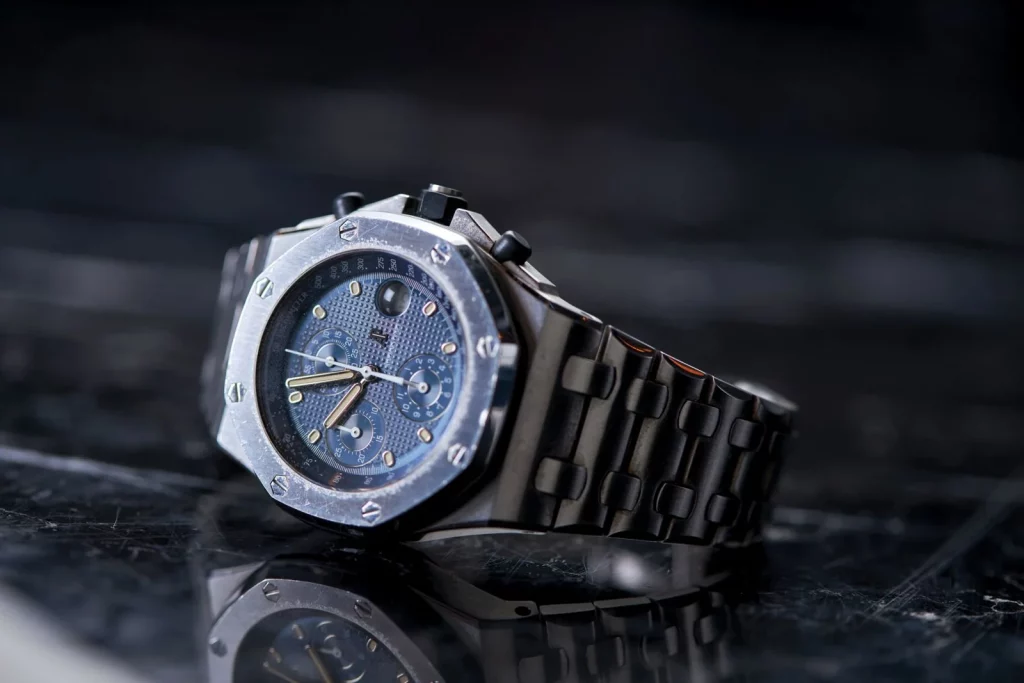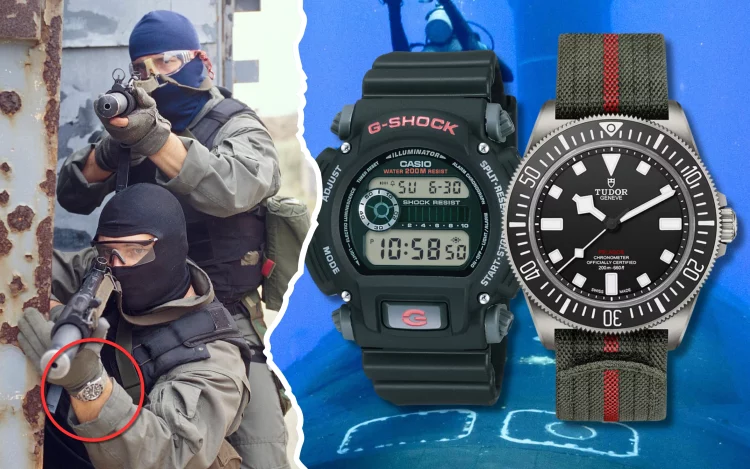A New Generation, An Old Watch: Seiko’s Revival as a Cultural Code
In a digital age dominated by smartwatches, constant notifications, and algorithmic optimization, it may seem counterintuitive that Gen Z—the youngest adult generation—would fall in love with mechanical timepieces. Yet across Instagram, Reddit forums, and YouTube channels, one brand is experiencing a renaissance few could have predicted: vintage Seiko. Once considered the everyman’s watch, dismissed by Swiss purists and overshadowed by luxury quartz evolution, these Japanese-made classics are now fueling a new kind of horological obsession. What changed?
The answer lies at the intersection of design, price, nostalgia, and identity. For Gen Z, authenticity matters more than prestige. They’re skeptical of overbranding and allergic to luxury for luxury’s sake. In this context, vintage Seikos are not just old watches—they’re portals into a different mindset. These mechanical artifacts embody a craftsmanship-before-hype philosophy that feels refreshing to a generation raised on subscription everything. And perhaps most importantly, they’re accessible—both in price and in spirit. A Gen Z buyer can get a beautifully finished 1970s Seiko diver for under $500 and feel just as much a collector as someone chasing a five-figure Rolex.
Affordable Icons: Design-Driven Value with No Compromises
One of the key appeals of vintage Seiko lies in its unmatched design diversity and mechanical heritage within a modest price bracket. Where Swiss watches often carry a four- or five-digit entry ticket, vintage Seikos from the 1960s through the early 1980s offer rich design language, in-house movements, and period-specific authenticity at prices that leave room for sneakers, a Spotify subscription, and rent.
Consider the Seiko 6139—the world’s first automatic chronograph with a vertical clutch and column wheel—released in 1969. It’s available today for under $1,000 in good condition. Then there’s the Seiko 6105 diver, famously worn by Martin Sheen in Apocalypse Now, whose asymmetrical case and tactile bezel design scream both utility and cinema cool. The 7016 Flyback, the 6138 “Panda,” and the 6309 “Turtle” are equally sought-after, not because they mimic luxury Swiss models, but because they charted their own bold aesthetic path.
Design-wise, Seiko’s vintage models excel at subtlety. Their dials often feature linen textures, sunburst brushing, or applied indices with polished facets that punch far above their weight. Hands are sharply beveled, cases are ergonomically curved, and the typography is resolutely Japanese-modernist—tight, clean, and functional. These watches feel like they belong on the wrist of someone who listens to vinyl, shops vintage denim, and shoots on film. They are, in every sense, the analog antidote to a digital life.
Online Culture and the Power of Watch Communities
Another reason vintage Seiko has captured Gen Z’s imagination is community. Platforms like TikTok, Discord, and Reddit’s r/Seiko have transformed the collecting process into a social experience. Young collectors share restoration tips, unbox 40-year-old finds, debate case shapes, and swap modding techniques with the kind of passion typically reserved for sneaker drops or manga fandoms.
This communal energy shifts the power dynamic. Unlike luxury watch collecting, which is often gated by income and exclusivity, the Seiko ecosystem is horizontal. You don’t need a Patek Philippe to earn credibility—you need a good eye, research skills, and a story. It’s about the hunt, the history, and the hacks. A $120 Seiko 5 rescued from an eBay lot and given a new crystal and strap can earn more clout in these circles than a $20,000 brand-new Omega.

Moreover, the modding scene surrounding vintage Seiko—particularly SKX models and 7S26-based movements—has turned the brand into a playground of personal expression. Gen Z, who came of age in a culture of customization (from MySpace pages to TikTok filters), find deep satisfaction in turning a watch into a canvas. It’s not about flexing value; it’s about making meaning.
Mechanical Soul vs. Vintage Risks: The Honest Trade-Off
Despite the romanticism, collecting vintage Seiko is not without its pitfalls. These are mechanical watches, many of which are 40 to 50 years old. Servicing costs can eclipse the purchase price. Sourcing original parts—especially for discontinued calibers like the 7018 or 6106—can be challenging. Water resistance is often a distant memory. And unlike luxury watches, whose values often rise on the auction block, many Seikos retain modest secondary prices, meaning the collector’s reward is emotional, not financial.
Yet, that’s precisely what Gen Z appreciates. This isn’t a generation obsessed with profit flipping. It’s one that values narratives over numbers. A scratched case isn’t a flaw—it’s a conversation starter. A faded bezel is a reminder that beauty ages. Mechanical irregularities become lessons in patience and repair culture. For young owners, learning to care for a vintage Seiko is like adopting a plant: it’s low-stakes responsibility with tangible rewards.
The Seiko 5 line exemplifies this dynamic. Often derided by Swiss loyalists as too simple, the vintage Seiko 5—with its day-date complication, in-house automatic movement, and shock protection—offers an ideal gateway. Its flaws are forgivable, its charm indelible. Whether it’s a 1974 7009-876A with a patina-rich dial or a boxy 1981 6309-729A “Slim Turtle,” these watches don’t ask for reverence. They invite participation.
Time as an Attitude: Why Seiko Feels Right for Now
At the heart of Gen Z’s vintage Seiko obsession is a deeper philosophical alignment. In a time when everything feels fast, planned, and monetized, a slow-ticking, hand-wound or self-winding mechanical watch offers a quiet rebellion. It is deliberately inefficient. It asks for attention. It connects the wearer not to cloud servers or satellites, but to springs, screws, and balance wheels. In doing so, it reorients time from commodity to ritual.
Wearing a vintage Seiko is, in many ways, a statement about how one wants to live. It says: I don’t need status symbols. I want soul. I want a watch that still works after 50 years, not one that needs a software update in two. I want something I can open up, fix, wear, and eventually pass on—not sell. In short, vintage Seiko offers not just a product, but a philosophy of ownership—and Gen Z is listening.
It also helps that Seiko never tried to be anything other than itself. Unlike many brands that have tried to retrofit heritage onto modern hype, Seiko has always celebrated its role as a toolmaker, a timekeeper of the people. From early Grand Seikos aimed at competing with the Swiss chronometer tradition to experimental quartz hybrids and kinetic movements, Seiko’s evolution has been one of bold experimentation. Its vintage catalog reflects that spirit—and Gen Z, a generation hungry for authenticity, has taken notice.
Conclusion: Cult Status, Built on Stories and Steel
The rise of vintage Seiko among Gen Z isn’t a trend—it’s a cultural signal. It reveals a generation craving meaning, aesthetic purity, and analog truth in a world that increasingly feels simulated. For the price of a phone accessory, a young collector can own a piece of horological history that still ticks with purpose and charm. And unlike most luxury acquisitions, a vintage Seiko doesn’t just sit in a safe—it lives on the wrist, patinas in the sun, and travels through time.
As more young collectors dive into the world of mechanical watches, Seiko remains uniquely positioned—not just as a gateway, but as a destination. Because sometimes, the most revolutionary choice a generation can make is not to chase the newest thing, but to rediscover what was always good.





































